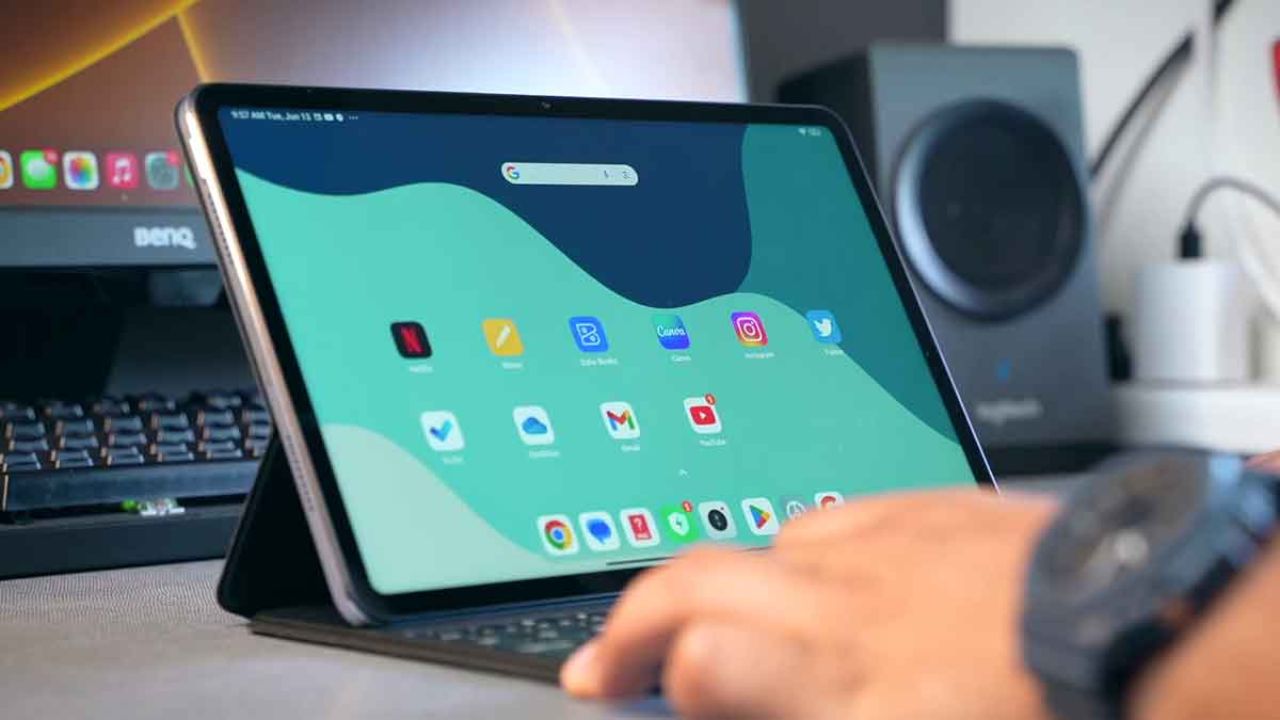Xiaomi Pad 6 Review: 2021 marked Xiaomi’s return to the tablet market with the introduction of the Xiaomi Pad 5 series. In 2022, the company released its successor, the Xiaomi Pad 6 series.
Similar to the standard Xiaomi Pad 5, the company released the standard Xiaomi Pad 6 on international markets. Both of these tablets are classified as mid-range, but their specifications rival those of premium models.
The most recent Xiaomi Pad 6 is an improvement over its predecessor for roughly the same price. It is closer in price to the Apple iPad 9th Generation, which is widely regarded as the most affordable tablet.
Simply stated, it serves as the Android equivalent to Apple’s offering. As I had just published my review of the OnePlus Pad, I was more than delighted to test the product when Xiaomi India reached out to me.
Even though the Xiaomi Pad 6 and the OnePlus Pad have a significant price gap, they are top Android competitors. In this article, I discuss my personal experience with these two tablets.
Before I proceed, I’d like to clarify that the featured brands in this article sent out their respective products on a returnable basis. Xiaomi and OnePlus had no effect on the conveyed opinions.
Xiaomi Pad 6 is practical, whereas OnePlus Pad is luxurious.
The Xiaomi Pad 6 has a metal unibody design, which is an improvement over the plastic body of the Xiaomi Pad 5. The camera island from the Xiaomi 12 series is also included.
It is distinctive and simple to recognise as a Xiaomi product. But still not as distinctive as the OnePlus Pad with its centred camera and breathtaking Halo Green hue.
Xiaomi Pad 6 Review: Unraveling the Best Value in the Android Space
The Xiaomi Pad 6’s sides are flat, whereas the OnePlus Pad’s extremities are rounded. Due to its smaller size, I found the Xiaomi tablet to be more comfortable to hold in my palms. The OnePlus tablet, however, feels more premium.
While the accessories for the OnePlus Pad have a more premium appearance and feel. The OnePlus keyboard is pricier than the Xiaomi keyboard, but it includes a compact and practical trackpad. The Xiaomi stylus, on the other hand, has two action buttons and an extended battery life, making it superior in several ways despite its higher price.
Sadly, none of them offer keyboard accessories with adjustable angles. However, the Xiaomi Pad 6 is more suitable for lap use.
Xiaomi MIX Fold 3 and Pad 6 Max and Redmi K60 Ultra: Expected Launch in August
Xiaomi’s software is preferable to that of OnePlus
The Xiaomi Pad 6 runs Android 13-based MIUI 14 for Pad, while the OnePlus Pad ships with Android-13-based OxygenOS 13.1.
The software of Xiaomi resembles iPadOS more than that of OnePlus. Interestingly, Xiaomi benefits from the blatant plagiarism.
The user interface and animations appear good on a large canvas. If you are transitioning from an iPad, you will feel somewhat at home.
The split-screen mode is virtually identical to that of iPadOS. It functions flawlessly for applications that are supported. Even split-screen combinations can be saved, similar to Samsung tablets and foldables.
Additionally, there is support for floating windows. Even on top of the split view, floating windows of compatible applications can be opened. Moreover, the interface is accessible from anywhere, much like iPads.
All of these features are very well implemented, which I cannot say about the OnePlus Pad. Overall, MIUI 14 for Pad is a more refined Android tablet operating system than OxygenOS 13.1.
One is suitable for content consumption, while the other is suitable for gaming
The Xiaomi Pad 6 features an 11-inch LCD display with a resolution of 2880 x 1800 pixels, 309 PPI, a refresh rate of 144 Hz, and a maximum luminance of 550 nits. In contrast, the OnePlus Pad features a larger 11.61-inch LCD display with a resolution of 2800 x 2000 pixels, 296 PPI, a refresh rate of 144Hz, and a maximum luminance of 500 nits.
According to its specifications, the screen on the Xiaomi Pad 6 is not only sharper, but also livelier. I also discovered that Xiaomi’s colour profiles are superior.
Both displays are HDR-enabled and also support Dolby Vision. However, none of them can play Dolby Vision Netflix content. The Xiaomi Pad 6 can at least play HDR content on Netflix, whereas the OnePlus Pad cannot.
The OnePlus Pad is still recommended for media consumption. Because quad speakers with Dolby Atmos support are preferable. They sound fuller, stronger, and more immersive than the Xiaomi Pad 6’s Dolby Atmos-supported quad speakers.
However, the Xiaomi Pad 6 is superior for gaming due to its Qualcomm Snapdragon 870 SoC. Compared to the MediaTek Diminutive 9000 chipset found beneath the OnePlus Pad, game developers have optimised this chip significantly more.
The Dimensity 9000 SoC is theoretically more powerful than the Snapdragon 870 processor. Even the benchmarks are consistent. However, I had a more enjoyable gaming experience with the Qualcomm chipset.
Similarly, the Xiaomi Pad 6 provides a superior stylus experience. Thus, the most recent tablet from Xiaomi is likely the best affordable option for aspiring artists and tablet enthusiasts.
This was already covered in my OnePlus Pad review. It would be preferable to have ChromeOS instead of Android on such hardware.
Android tablets are unenjoyable to use due to the absence of optimised applications and a desktop-level web experience. I frequently use Twitter, Instagram, and Threads. None of these social media platforms have an Android tablet application.
The Twitter app functions similarly to the mobile application. While Instagram and Threads applications display in letterboxed mode.
On ChromeOS, there is no ubiquitous ecosystem feature comparable to Phone Hub. On both the Xiaomi Pad 6 and the OnePlus Pad, the manufacturer’s implementation is used. Xiaomi refers to it as MIUI+, whereas OnePlus terms it Multi Screen Connect. These features are only compatible with smartphones manufactured by the respective manufacturers.
Android on tablets will only improve as more developers optimise their applications to take advantage of the large canvas and multitasking capabilities.
Clearly, the Xiaomi Pad 6 is superior to the OnePlus Pad despite being 11,000 less expensive.
For those unaware, the Xiaomi Pad 6 retails for 26,999 for 6GB + 128GB memory configurations and 28,999 for 8GB + 256GB memory configurations. The keyboard and stylus are respectively priced at 4,999 and 5,999.
The 8GB + 128GB and 12GB + 256GB memory configurations of the OnePlus Pad are priced at 37,999 and 39,999, respectively. The cost of its keyboard and stylus is 7,999 and 4,999, respectively.
The OnePlus Pad is by no means a poor product. The tablet and its accoutrements have the same premium feel and appearance as the Apple iPad and Samsung Galaxy Tab S series. For some, this alone justifies the price.
In the majority of other categories, however, the Xiaomi Pad 6 outperforms the OnePlus Pad at a substantially lower price. In its price range, no other option comes close to matching it.
In light of the limitations on Android tablets, the Xiaomi Pad 6 appears to be a better value than any other Android tablet due to its competitive pricing and feature set.


















